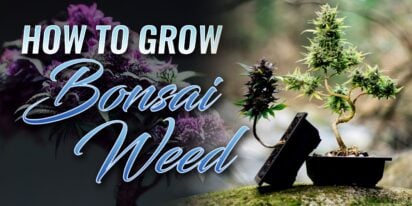
Are You 18 Or Over?
YesOr
No By clicking yes, you certify that you are over 18. By using this website, you agree to our legal disclaimer.605+ Cannabis Strains over 20 Breeders worldwide.
Table of Contents

Table of Contents
The story starts with five students from San Rafael, California, calling themselves “the Waldos.” In 1971, they heard about a treasure map leading to hidden cannabis, supposedly left by a Coast Guard member. Every day at 4:20 p.m., after school, they met at the Louis Pasteur statue to search for the treasure. Despite their efforts, they never found it. However, their routine of meeting at 4:20 became a cultural phenomenon, giving birth to “420.”
The tale begins with a group of high school students from San Rafael, California, who named themselves “the Waldos.” In the autumn of 1971, they set out on a journey fueled by curiosity and the desire for adventure. They had stumbled upon a treasure map said to lead to a secret stash of cannabis abandoned by a Coast Guard member. At 4:20 p.m. every day, after school, the Waldos gathered at the Louis Pasteur statue to pursue the elusive treasure. Despite their persistent efforts, the treasure remained out of reach. Nevertheless, their daily ritual at 4:20 p.m. eventually gave rise to the cultural phenomenon known as “420.”
The journey of 420 from a local story to a worldwide sensation took an unexpected twist thanks to the influence of the iconic band, the Grateful Dead. The Waldos, connected to the Dead’s inner circle, played a crucial role in spreading the term within the counterculture community.
In 1990, during a Grateful Dead concert in Oakland, California, journalist Steven Bloom encountered 420 firsthand. A flyer distributed among Deadheads encouraged people to gather at 4:20 on April 20th, honoring the Waldos and solidifying the link between 420 and cannabis culture.
The path of 420 from a local tale to a global phenomenon took an interesting turn because of the Grateful Dead’s influence. The Waldos, who had connections to the band, helped popularize the term within the counterculture scene.
In 1990, at a Grateful Dead concert in Oakland, California, journalist Steven Bloom came across 420. A flyer passed around among Deadheads urged fans to assemble at 4:20 on April 20th, acknowledging the Waldos and cementing the connection between 420 and the cannabis community.
Sparked by the push for cannabis legalization and increased media attention, the idea of 420 moved beyond its roots in the counterculture, reaching a wider audience. High Times magazine played a key role in spreading the story of the Waldos, helping to spread 420 worldwide and firmly establishing it as a significant cultural symbol.
The adoption of 420 as an unofficial holiday further cemented its position in popular culture, with gatherings and festivities held globally every April 20th. Despite efforts by certain institutions, like the University of Colorado and the University of California, Santa Cruz, to discourage its celebration, 420 persisted as a symbol of support for cannabis and unity within communities.
Even years after their adventures, the Waldos still hold onto a special place in cannabis culture, preserving a legacy that’s deeply woven into its fabric. Their collection of 420 memorabilia and letters serves as tangible evidence of their significant role in creating a cultural phenomenon.
Looking forward, the legacy of 420 continues to thrive, opening up possibilities for documentaries or compilations that delve into the Waldos’ story. No matter which path they take, their impact on cannabis culture is undeniable, showing how friendship and curiosity can spark movements that endure through time.
Q: What are some common misconceptions about the origins of “420”?
A: One common misconception is that “420” refers to the number of chemicals in marijuana, but it originated from a group of high school students in California.
Q: Did the Waldos ever find the hidden cannabis crop they were searching for?
A: No, despite their efforts, the Waldos never located the elusive cannabis treasure mentioned in the treasure map they received.
Q: How did the term “420” become associated with cannabis culture?
A: The term “420” became associated with cannabis culture through the influence of the Grateful Dead and the widespread adoption of the term among enthusiasts and countercultural communities.
Q: Are there any efforts to stop the celebration of 420?
A: Yes, some institutions, such as universities, have attempted to discourage participation in 420 celebrations, but these efforts have generally been unsuccessful.
Q: What artifacts serve as reminders of the Waldos’ role in popularizing “420”?
A: Artifacts such as original 420 memorabilia and correspondence kept by the Waldos serve as tangible reminders of their pivotal role in popularizing the term.

In recent years, the discourse surrounding secondhand marijuana smoke has gained significant attention, paralleling the legalization and increas

In the realm of cannabis culture, the practice of "wake and bake" holds a significant place, accompanied by both supporters and skeptics. As exp

Introducing the robust indica strain known as Critical Mass weed, a harmonious fusion of Afghani and Skunk #1 genetics. Delve into its essence,

Fusarium wilt cannabis represents a significant threat to cannabis cultivation, necessitating a comprehensive understanding of its intricacies.

1980s were a time of profound cultural transformation, marked by iconic fashion, music, and movies. Alongside these trends, a unique facet of '8

[ez-toc] In the deep history of cannabis cultivation, there exists a captivating and creative practice that combines the art of cultivation wit

For growers looking to get better yields and healthier cannabis plants, it's important to understand and control the cannabis soil pH levels. pH

[ez-toc] In indoor gardening, maintaining an optimal temperature within your grow tent is crucial for the health and productivity of your plant

[ez-toc] Welcome to the delightful world of cannafudge crafting, where sweetness meets sophistication, and cannabis infusion adds a unique twis

[ez-toc] You’ve finished trimming your weed, but what about those leftover stems? Don’t throw them away! These seemingly useless bits can a

Are You 18 Or Over?
YesOr
No By clicking yes, you certify that you are over 18. By using this website, you agree to our legal disclaimer.